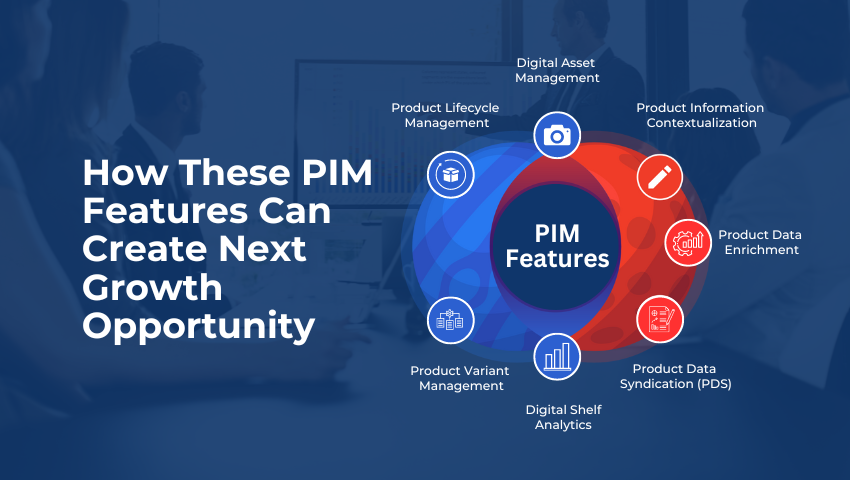The increasing need for effective product information management solutions has become critical for businesses that sell products online. With the growing number of sales channels and the rising complexity of product information, companies face the challenge of managing and distributing their product information accurately and consistently.
The demand for PIM solutions is expected to grow significantly in the coming years, driven by the need for businesses to deliver accurate and up-to-date product information across multiple channels, including eCommerce websites, mobile apps, social media platforms, and marketplaces. According to Coherent Market Insight, North America and Asia Pacific are expected to witness robust growth in the product information management software (PIM) market due to the increasing internet and smartphone penetration and the rapid growth of the e-commerce industry.
The PIM market is expected to expand as businesses recognize the benefits of implementing PIM solutions, including increased efficiency, improved customer service, and better product data quality.
Overall, PIM can help businesses increase revenue and improve customer experience by providing a centralized, enriched, and consistent product information management system that can be published across multiple channels with automation and analytics to optimize your business strategy.
Download a FREE copy of eBook: Product Catalog Management- Discover the Importance, Conquer the Challenges, and Transform Your Catalog with Automation
Most organizations utilize below PIM features:
Improved Product Data Quality: PIM software lets you maintain accurate and up-to-date product information across all channels. This results in improved data quality, which helps reduce errors and inconsistencies that could lead to customer dissatisfaction and lower sales.
Increased Efficiency: By utilizing PIM software, you can streamline your product information management process and automate tasks previously done manually. This helps you save time and reduce costs associated with managing product information.
Enhanced Customer Experience: PIM software enables you to provide customers with consistent and accurate product information across all channels, which improves their shopping experience and increases their trust in your brand.
Faster Time-to-Market: PIM software allows you to quickly and efficiently launch new products by providing a central repository of product information that can be easily accessed by all teams involved in the product launch process.
Better Data Governance: PIM software enables you to establish and enforce data governance policies, which helps ensure that product information is accurate, complete, and compliant with regulatory requirements.
[Bonus Read: Best Way To Increase ROI With Product Information Management (PIM)]
But here are some additional PIM features that can deliver amazing results:
Product Information Contextualization: PIM systems can provide contextual information about a product, such as information about its intended use or its compatibility with other products. For example, if a company sells home appliances, the PIM system could provide information about which products are compatible with a specific refrigerator or washing machine. This would help customers make more informed purchase decisions.
Product Information Language Translation Automation: PIM systems can provide automated translation of product information into multiple languages. For example, a company that sells fashion products could use a PIM system to automatically translate product descriptions into different languages, making it easier for customers around the world to access and understand the product information.
Product Data Syndication (PDS): PIM systems can syndicate product data to various channels, such as e-commerce platforms, marketplaces, and social media. For example, a company that sells electronic products could use a PIM system to syndicate product data to various marketplaces such as Amazon, eBay, and Best Buy, making it easier for customers to find and purchase their products.
Product Variant Management: PIM systems can manage product variants, such as different sizes, colors, and configurations of a product. For example, a company that sells clothing could use a PIM system to manage product variants such as size and color, making it easier for customers to find and purchase the products they want.
Print Publishing: PIM systems can provide print publishing capabilities, such as the ability to generate catalogs or flyers. For example, a company that sells industrial equipment could use a PIM system to generate a catalog of its products, which could be distributed to potential customers at trade shows or through direct mail.
Channel Behavioral Data and Digital Shelf Analytics: PIM systems can collect and analyze behavioral data from various channels, such as e-commerce platforms and social media, to gain insights into customer behavior and preferences. For example, a company that sells beauty products could use a PIM system to analyze data from social media platforms to understand which products are popular among customers, and to optimize their product information to meet customer demand.
Multi-language Support: PIM systems can provide support for multiple languages, which is essential for companies that sell products globally. This feature allows product data to be translated into multiple languages, making it easier for customers in different regions to access and understand the product information. For example, a company that sells products in Europe and Asia may need to provide product information in English, French, German, Chinese, and Japanese.
Digital Asset Management: PIM systems can include a digital asset management (DAM) module, which allows companies to manage all types of digital assets such as images, videos, and documents. DAM can also help with product image management, ensuring that the right product images are associated with the right products, and that they are consistent across all channels. For example, a company that sells furniture can use DAM to manage product images and videos for each product, ensuring that the images are high-quality and consistent across all sales channels.
Product Lifecycle Management: PIM systems can integrate with Product Lifecycle Management (PLM) systems to manage the entire lifecycle of a product, from ideation to retirement. This feature helps companies to manage the product development process and ensure that the product data is accurate and up-to-date at every stage of the product’s lifecycle. For example, a company that sells electronic products can use PIM and PLM to manage the product development process, from the initial design to the end-of-life phase.
Product Data Enrichment: PIM systems can provide tools and functionality to enrich product data, such as by adding additional attributes, descriptions, and other information. This feature helps companies to provide more detailed and relevant product information to customers, making it easier for them to make informed purchase decisions. For example, a company that sells skincare products can use PIM to enrich its product data with detailed descriptions of each product’s ingredients, benefits, and usage instructions.
In conclusion, PIM systems provide a range of features and functionality to help companies manage, maintain, and distribute product data effectively. These features can help companies to sell products more effectively, provide a better customer experience, and gain insights into customer behavior and preferences.
Want a one-to-one conversation to delve deep into these PIM features? Connect with our certified Pimcore Implementation Partners.


